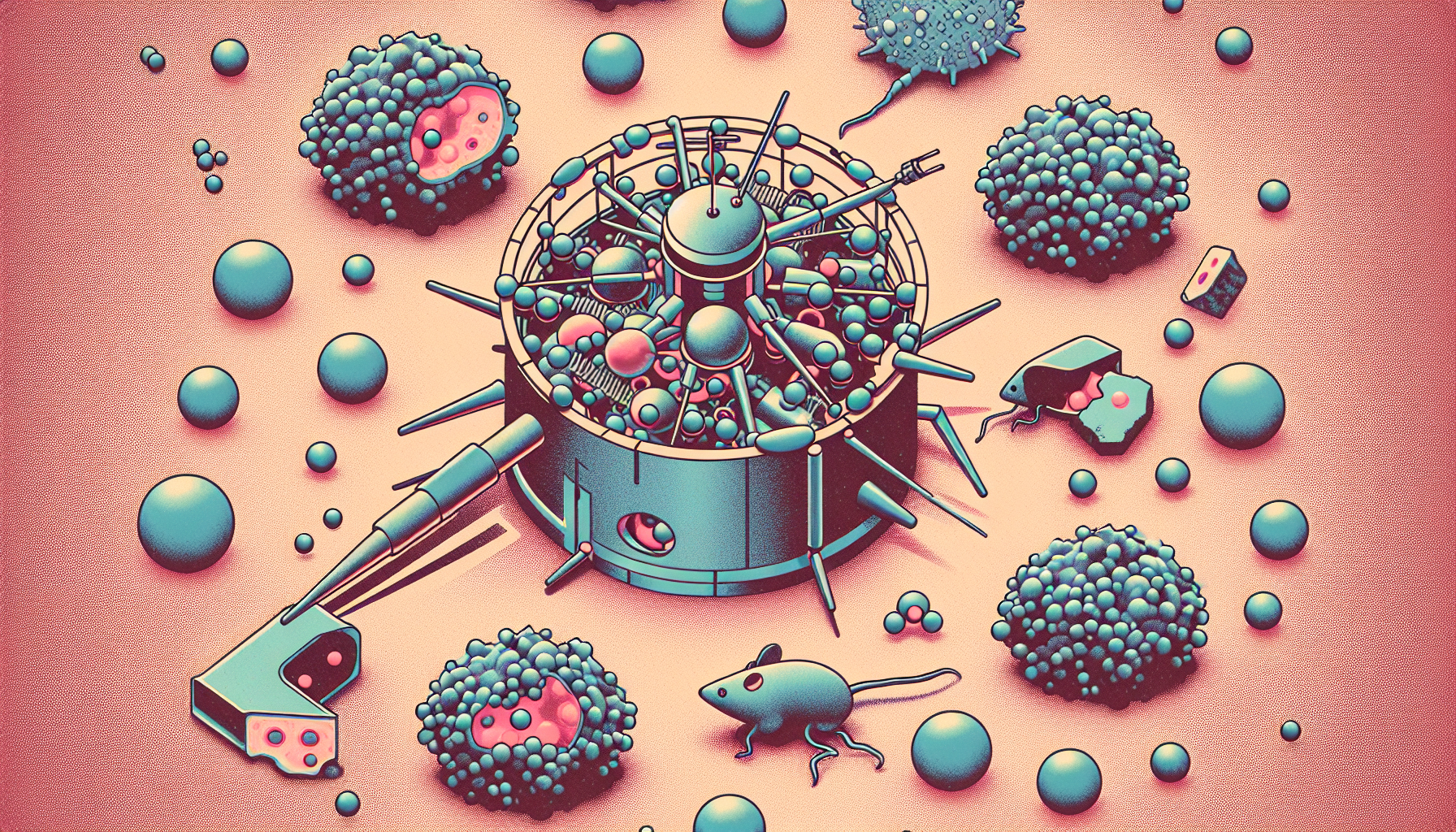The development of nanorobots designed to target and kill cancer cells represents a significant advancement in the field of cancer treatment. These nanorobots, engineered to operate at the microscopic level, have shown promising results in preclinical studies involving mice.
### Mechanism of Action
The nanorobots are designed to exploit the unique conditions of the tumor microenvironment. Here’s how they work:
1. **Targeted Delivery**: The nanorobots are programmed to navigate through the bloodstream and accumulate specifically in tumor tissues. This targeted delivery ensures that the nanorobots concentrate their efforts where they are most needed, minimizing exposure to healthy cells.
2. **Environmental Trigger**: Once inside the tumor, the nanorobots are triggered by the specific biochemical conditions present in the tumor microenvironment. This trigger mechanism allows the nanorobots to expose a hidden “weapon” that is otherwise dormant, ensuring that only cancer cells are targeted.
3. **Selective Killing**: The exposed “weapon” could be a drug, enzyme, or other therapeutic agent that selectively kills cancer cells while sparing healthy cells. This precision is crucial in reducing the side effects commonly associated with traditional cancer treatments.
### Key Features
– **Precision**: The nanorobots are engineered to recognize and respond to the unique biochemical signals present in tumor environments, allowing for precise targeting of cancer cells.
– **Minimized Side Effects**: By sparing healthy cells, these nanorobots aim to reduce the adverse effects often seen with chemotherapy and other conventional treatments.
– **Efficiency**: The ability of nanorobots to accumulate in tumor tissues and deliver therapeutic agents directly to the site of the cancer enhances their efficacy.
### Potential Impact
The development of these nanorobots holds significant potential for improving cancer treatment outcomes:
1. **Enhanced Efficacy**: Direct delivery of therapeutic agents to cancer cells could lead to more effective treatment with fewer doses.
2. **Reduced Toxicity**: By sparing healthy cells, these nanorobots may reduce the toxicity associated with current cancer therapies, improving patient quality of life.
3. **Personalized Medicine**: The precision of these nanorobots could pave the way for more personalized cancer treatments, tailored to the specific biochemical profile of each patient’s tumor.
### Future Directions
While the initial results in mice are promising, further research is necessary to translate this technology into human clinical trials. Key areas of focus will include:
1. **Safety and Efficacy Trials**: Comprehensive studies to ensure the safety and efficacy of these nanorobots in human subjects.
2. **Scalability**: Developing methods to scale up the production of these nanorobots while maintaining their precision and effectiveness.
3. **Combination Therapies**: Exploring the potential of combining nanorobot therapy with other cancer treatments to achieve synergistic effects.
In summary, the development of nanorobots that can selectively kill cancer cells by exploiting the tumor microenvironment represents a groundbreaking approach in cancer therapy. As research continues to advance, these nanorobots may offer new hope for patients by providing more targeted, effective, and safer treatments.

Leave a Reply